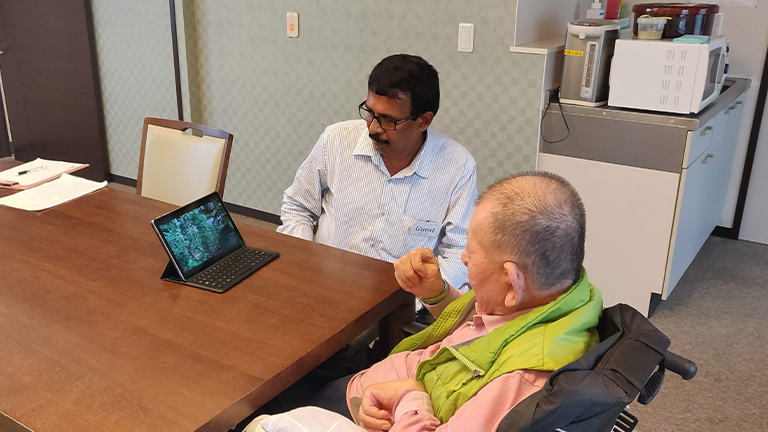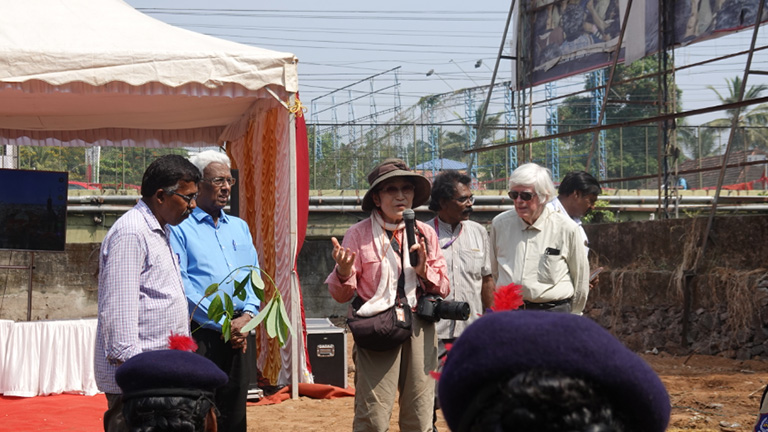
Attempts to plant trees in this plot began in 2006 but each of them ended in a failure. The trees would grow for two or three years before drying up in seasons of acute drought. Nearly a decade later, in 2015 to be precise, M.R. Hari M. R. heard about the Miyawaki Model of Afforestation for the first time. He studied it in detail for two-three years, and eventually put up a Miyawaki forest in the plot for the first time on 30 January 2018.
The growth of the trees and plants in the first Miyawaki forest at Puliyarakonam was nothing short of extraordinary. Despite the 45 degree incline of the site, the plants and trees shot up quickly. They helped retain water, attract micro-organisms and small creatures, and create a thriving ecosystem.

He not only appreciated Hari on the success of his mission but also suggested that creepers and climbers be avoided for the first three years of the creation of the Miyawaki forest. Dr Miyawaki said that after the forest stabilizes itself, creepers and climbers may either be planted or they may grow with the intervention of small creatures and birds. Another valuable input was his observation that planting of saplings belonging to thirty different species was enough to make a forest. Inclusion of more would convert the forest into an arboretum. The other great advantage of the visit to Japan was that Hari could see Miyawaki forests that were more than half a century old!
Thanks to this interaction, M.R. Hari was able to meet Prof. Box and Prof. Fujiwara, Dr Miyawaki’s first students and colleagues. It was also possible to invite Prof. Box and Prof. Fujiwara to Kerala so that they could visit the Miyawaki forests the Invis team had created at various parts in Thiruvananthapuram. Their visit was extremely helpful because they gave a lot of advice and instructions on how to improve our practices, and increase the growth rate of our forests.



